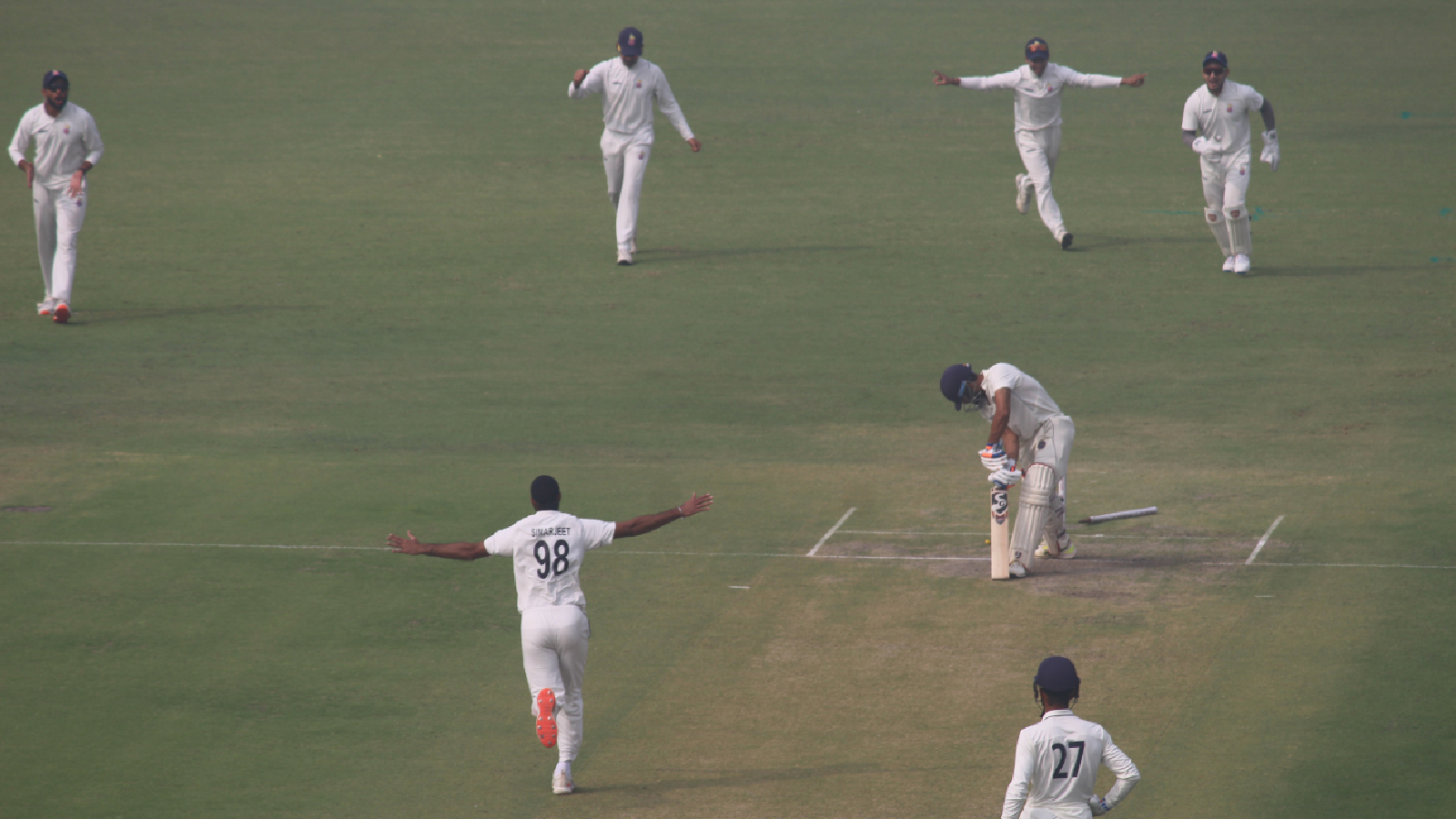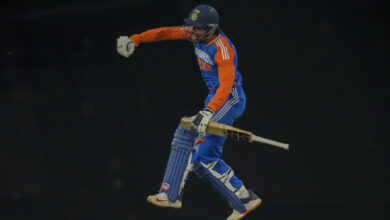Why wind surfer Katya Coelho’s challenge is to build muscle weight

Katya Coelho grapples with a unique physics phenomenon – if she’s too light, she can’t go fast in her sport. The 23-year-old is constantly trying to build muscle and get heavier. “There’s no motor pulling you, you have to move with strong winds and waves which needs you to be heavy,” says India’s Asian Games-bound female wind-surfer in the Olympic sailing category of IQFOil. “There’s an enormous fin (hydro foil) under the boat which needs balancing. If you don’t have adequate body weight, it’s difficult.”
Katya Coelho at the gym. (Special arrangement)
While most Olympic sports contested indoors see athletes struggle to cut weight so that match-ups are fair, it doesn’t get more outdoorsy than wind-surfing where competitors are both aided but mostly battling wind gusts and choppy waves. “I’m in the gym twice a day trying to build muscle weight. It’s very difficult for females,” the Goan athlete, says. It’s why her off-water training – a bulk of it, pun intended – comprises MMA and kick-boxing.
Katya’s father Donald runs a restaurant at the Anjuna flea market, where he first saw a European wind surfer vrooming at high speed on the bright red IQFOil sailing gear. Equipment is standard, which means everyone competes on the same rig – a board with a lower fin and an equivalent of a sail. A former national champion circa 2004, Donald decided to train his children, Dayne and Katya in the RS 1 Class, an event that IQFOil has now replaced at the Olympics and Asian Games. “It took me 10 days to get a grip on this IQFOil and get on the board after buying equipment from a friend,” Donald says of falling off in a “hundred capsizes.” It’s like chess on water, negotiating the buoys, winds and unruly waves steering the ringed ‘boom’.
Katya won her first international medal at a Thailand Windsurfing Cup in November 2022, but reckons she lacks the expertise that’s only gained from sailing in fleets of 10-12 like the Europeans or the Chinese.
A single gear – the whole fancy red and white assembly of water-racing things – can cost 10-12 lakh. Expenses perennially drain Donald’s pockets. “But I decided to put everything I have and profits into getting them into the Olympics,” he says, like a proper ambitious father. There’s now help from ENGN, and organization that exclusively supports sportswomen with gear, nutrition and training costs. One coaching session can cost 300 Euros an hour.
Katya Coelho surfs. (Special arrangement)
It’s the zanniest event to surf, with the foil – board seemingly floating above water, and racing fleets in fetching techno red make it the most modern of contemporary Olympic sports as far as inventing chronology goes. But sailing itself is on the periphery of Indian sportscape, IQFOil a tiny red dot on the far horizon, so financially it’s always an almighty struggle. “It is a physically demanding sport. But the first moment I started when I was 8 on a boat with a sail, it was magical.”
The costs are very un-magical in muggle money, though Katya is undeterred.
Her focus since the Youth Olympics she went to, is in prepping her body for hours, though she’ll be on water for a fraction of that time. These months before Asian Games are thus devoted to get that body muscle mass up.
“Males build muscle faster than females do,” she starts to explain. “This is because guys have more testosterone which helps form muscle. Since women naturally have less testosterone, they build muscle at a slower pace.
For most athletes in sailing now (Nacra sailing , kitesurfers , iq foiling etc) you need to put on more muscle weight in order to keep the board in an angle which maximises speed in strong wind conditions, the heavier and stronger you get the faster you can go.”
It’s a challenge that extends even to rowers, who come to the fore for India only in the Asian Games years. “Indian athletes face this challenge in a lot of other sports as well and not just foiling. If you see generally most Indians are pretty lean in their built and need to put on muscle mass to generate strength,” she adds.
The ideal weight that she usually likes to maintain is somewhere between 55-57 kgs. “In that way I ensure that I do not compromise on strength either. In my regimen I try to follow a process that has worked for me over the years. I believe the reason I have been able to get stronger as time went is because I always consume a very holic diet which covers all health aspects and at the same time I ensure that my training is holic,” she says. Maneuvering the IQFOil sail is all that an outsider will see, but some serious weight training goes in beyond the wind-negotiating routines. “My training is not focused only on skills but also on heavy-duty cardio, muscle strength and conditioning,” she says.
Qualifying for the Hangzhou Asian Games, the last trials ended up being quite eventful. She had wrecked her knee at 2018 edition, but the trials for 2023 threw up another scare, which she deftly steered past.
Katya was sailing for the first time in the Girgaum chowpatty waters for the Asian Games trials and racing at a good speed. It’s when her foil underneath the board got enmeshed in a huge net, that was not visible from the surface. When she went to remove the harness, there was a tad untangling required. There’s a reason IQFOil gets raced with helmets and impact jackets, because the speeds can get unreal. The mishap aside, Katya adores her sport even as it exerts every last sinew.
“No two days are same in windsurfing. People pay to go out in the sea to watch dolphins, I see them just like that during training. I’ve grown up around jellyfish and turtles. Yes the sport is demanding and scary, but it’s all about judging wind, waves and reading the clouds. I love it,” says the Goan.







